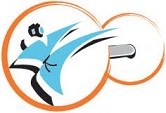|
Means sound knowledge. Sound knowledge of each movement and technique is the
first step towards performing a kata properly. Seeking out sound knowledge is
the foundation to achieving any goal you have set for yourself. |
Derived from the characters Yan, meaning safe, and
Su, meaning three. The name is attributed to that of a Chinese military attaché
to Okinawa in the 19th Century. The word yansu also means to keep pure, striving
to maintain the purity of principles and ideals rather than compromising for
vainly objectives. |
|
Literally translated as "grand ultimate", and in
Chinese, the kanji characters are pronounced Tai Chi. The word Taikyoku can also
mean overview or the whole point – seeing the whole rather than focusing on the
individual parts, and keeping an open mind or beginner's mind. The beginner's
mind is what is strived for during training and in life. The beginner's mind
does not hold prejudice and does not cling to a narrow view. The beginner's mind
is open to endless possibilities. That's why a practitioner should never think
that as soon as it ascends in the latter or more complex katas the first and
most basic ones loose importance, therefore, keep an open mind.
The embusen (pathway) of all the Taikyoku kata is simple (here, the #
represents the starting and ending point):
!--*--!
|
|
|
|
!--#--! |
Tensho means rolling or fluid hand, literally
translated as "rotating palms". Tensho is the soft and circular (yin)
counterpart to the hard and linear (yang) Sanchin kata. Not only was Tensho one
of Mas Oyama's favorite kata, he considered it to be the most indispensable of
the advanced kata:
Tensho is a basic illustration of the definition of Karate, derived from Chinese
kempo, as a technique of circles based on points. Tensho should be a prime
object of practice because, as a psychological and theoretical support behind
karate training and as a central element in basic karate formal exercises, it
has permeated the techniques, the blocks and the thrusts, and is intimately
connected with the very life of karate. A man who has practiced Tensho kata a
number of thousands of times and has a firm grasp of its theory can not only
take any attack, but can also turn the advantage in any attack, and will always
be able to defend himself perfectly. |













